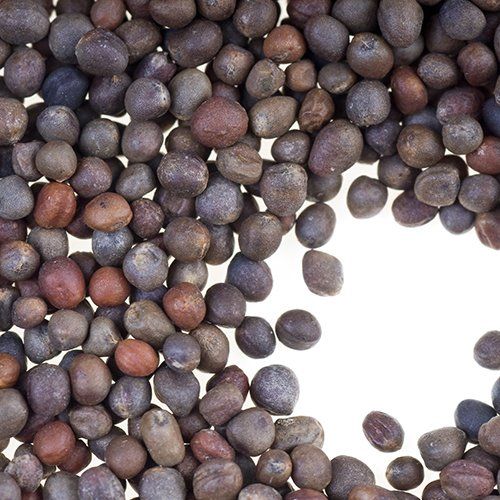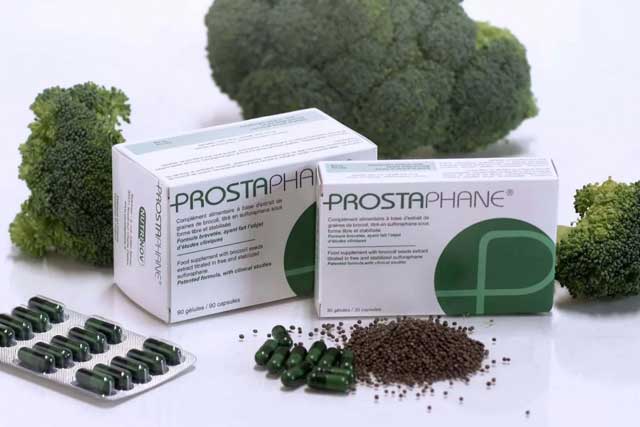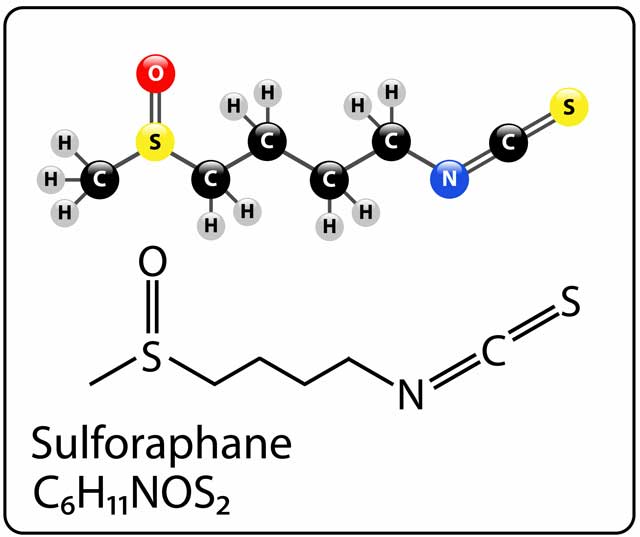BE ACTIVE FOR YOUR PROSTATE
Prostaphane®
A dietary supplement for men aged 45 and over who are experiencing the first signs of physiological ageing of the prostate.
Long Research
Different Formula
Manufacturing
Quality Control
Food Suplement
What is Prostaphane® ?
Prostaphane® is a food supplement based on Sulfodyne®, an registered trademark ingredients of Ingood by Olga, an extract of broccoli seeds standardized in sulforaphane in its free and stabilized form.
Prostaphane® has demonstrated an excellent clinical and biological tolerance profile.
Prostaphane® is a formula developed by experts in Brittany, France - the result of a long research and work.
Patented Formula
Sulfodyne®
Prostaphane® is produced from Sulfodyne®, an ingredient made from broccoli seeds. The seeds are harvested in Europe and are selected for their quality and sulforaphane content. They are GMO-free and are fully traceable from the crop to harvest.
All Prostaphane® manufacturing steps take place in France. The active ingredient Sulfodyne® 5% of active and stabilized sulforaphane is produced and marketed by Ingood by Olga.
What is SULFORAPHANE ?
Sulforaphane is the main isothiocyanate from broccoli, it was isolated in 1992 by Pr Talalay in the USA.
The free form of sulforaphane is naturally unstable, highly reactive and degrades in a few days at room temperature.
Sulfodyne® provides a free and stabilized form of sulforaphane ensuring constant dosage and optimal bioavailability.

Research
Inngood By Olga succeed in stabilizing natural sulforaphane from broccoli seeds through an innovative encapsulation process and created the ingredient Sulfodyne®. The process is the subject of several patents.
Sulfodyne® provides a free and stabilized form of sulforaphane ensuring constant dosage and optimal bioavailability.
The starting point of the project was initiated in 1998, when a study was carried out on the sulforaphane molecule.
At that time, the molecule was barely known in the scientific world and it was through a publication written by Professor Talalay of the University of Baltimore (USA) on the interests of sulforaphane and some of its mechanisms of action that our curiosity was aroused.
Intrigued by this new molecule with innovative properties, Olga (ex Triballat Noyal) laboratory set up a project with the Brittany region to connect the Breton agricultural sector with the laboratory. The aim of this project is to enhance regional products and stimulate innovation in the territory.
To this end, several varieties of cabbage were studied by our laboratory to determine which parts of the plant were the richest in sulforaphane. The research and development team quickly encountered the main problem caused by the sulforaphane molecule, its instability. This will result in 20 years of hard work, between studies and experiments, to make the molecule stable and available, a world first!
This is how Prostaphane® dietary supplement was born.
Protected by 2 patents, it is marketed by Ingood by Olga, business unit of Olga group since 2015 which markets the active ingredient Sulfodyne® 5% of active and stabilised sulforaphane.
Formula
There are several broccoli-based dietary supplements on the market. Most of them contain glucoraphanin, often under the misleading name “sulforaphane glucosinolate.” Glucoraphanin is an inactive molecule in this form. Studies have shown that glucoraphanine only allows 10% bioavailability in sulforaphane.
Prostaphane® therefore offers a dietary supplement based on free sulforaphane, which, unlike other dietary supplements, allows an average bioavailability of 70% in sulforaphane.
Fahey et al., 2016, Stabilized Sulforaphane for Clinical Use: Phytochemical Delivery Efficiency. Mol. Nutr. Food Res. 0, 0, 2016, 1600766 DOI 10.1002/mnfr.201600766
Prostaphane® Manufacturing
Firstly, the seed undergoes a de-oiling step, which involves removing the oil from it. The recovered flour is subjected to different extraction process according to specifications to preserve the sulforaphane.
Once extracted, sulforaphane is stabilized by microencapsulation using a specific patented process and a powder concentrated in free and stabilized sulforaphane is obtained. This powder is finally integrated into a capsule to deliver 10 mg of sulforaphane per capsule.
Quality Control
The manufacture of Prostaphane® follows European regulations. The different steps of manufacturing are overseen by precise specifications. Checks are carried out throughout the process to ensure the quality and efficacy of the product. Audits are carried out regularly.
Traceability is assured from the production of the seed to the distribution of Prostaphane® boxes.
Studies
Beyond the numerous scientific publications which report the benefits of sulforaphane, Prostaphane® has demonstrated its value in a randomized placebo-controlled clinical study with 80 patients.
The bioavailability of Sulforaphane
What is Sulforaphane ?
Sulforaphane is the main isothiocyanate from broccoli, it was isolated in 1992 by Pr Talalay in the USA.
Subject to international scientific research for 30 years, numerous in vitro, in vivo and clinical studies have demonstrated the activities of sulforaphane.
VARIABILITY OF SULFORAPHANE BIOAVAILABILITY
The ingestion of broccoli does not ensure a constant concentration of sulforaphane in the body. It depends on :
- The quality of the broccoli
- The type of preparation
- The hydrolysis that occurs in the intestinal flora which will be different from one person to another
- The storage conditions of the brocoli
The only way to control the dose and bioavailability of sulforaphane is to take it in its free form.
Isothiocyanates are produced by the enzymatic hydrolysis of glucosinolates found in cruciferous. There are more than 120 different glucosinolates. In broccoli, the predominant glucosinolate is glucoraphanin.
Sulforaphane is naturally present in cruciferous in its precursor form – glucoraphanin (or “sulforaphane glucosinolate”).
The transformation of glucoraphanine into “free sulforaphane”, a bioactive molecule, requires the action of myrosinase (by hydrolysis). This mechanism occurs when the food is chopped, chewed or in contact with the intestinal bacterial flora. Nevertheless, myrosinase is heat-sensitive and is found in varying amounts in the plant and body.
FAQs
Got a question? We’re here to help.





